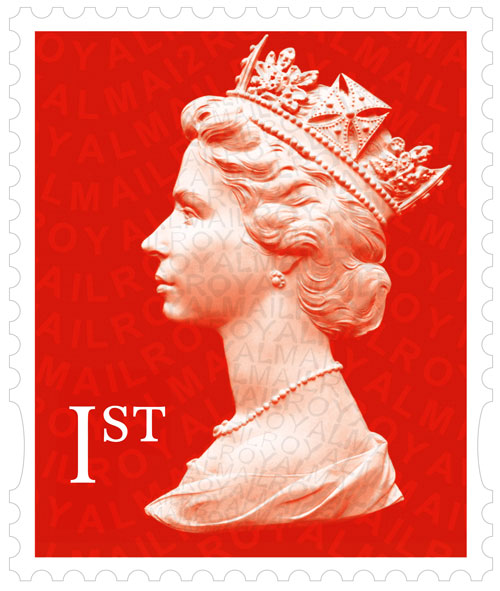The end of one reign and the start of another brings with it many changes with the introduction of the King’s head on currency and stamps to amended cyphers and altered signatures. Coins featuring the new King will show him facing to the left - Elizabeth II’s effigy faced the right.
It is a tradition from the 17th century to alternate the way successive monarchs are facing. New coins and notes will need to be designed and minted or printed, but are not likely to appear in general circulation for some time.
The Royal Mint advisory committee needs to send recommendations for new coins to the Chancellor and obtain royal approval. Designs are then chosen and the final choices approved by the Chancellor and then the King.
The Queen’s coins are expected to stay in use until they are gradually replaced, with the new King set to feature on British stamps, and others around the Commonwealth.
The words to the National Anthem have changed to “God save our gracious King” with substitutions of “him” and “he”. This is a matter of tradition, not law.
Face-to-face, Charles will be Your Majesty rather than Your Royal Highness on first meeting, and Sir on second reference, instead of Ma’am – to rhyme with “lamb” – which was used on second reference to Elizabeth II. The new monarch will need a new Royal Cypher – the monogram impressed upon royal and state documents.
While English queens use the St Edward’s crown, or a variant of it, kings traditionally use the more rounded Tudor crown. Any new postboxes could feature the new King’s cypher.
At the start of the Queen’s reign in 1952, there were objections in Scotland to her being styled Elizabeth II because the Tudor queen Elizabeth I was never a queen of Scotland. A Post Office pillar box in Edinburgh bearing the ERII cypher was defaced and later blown up.
Before, it was simply “Charles.” Now it will be the name he has taken as King with an additional R for Rex – Latin for King – at the end.
In criminal court cases, the R to denote the Crown now stands for Rex rather Regina (the Queen). Military medals, such as operational ones and long service commendations featuring the Queen’s effigy, will need to be altered.
The royal coat of arms, adopted at the start of Queen Victoria’s reign in 1837, will remain the same. But just as when the Queen became monarch, it is likely that new artwork will be issued early in Charles’s reign by the College of Arms for use by public service bodies such as the civil service and the armed forces.
The Duke of Cambridge will be given an updated coat of arms when he is made the Prince of Wales – a title which he does not inherit automatically. As King, Charles will need a new personal flag.
While the Royal Standard represents the Sovereign and the United Kingdom, the Queen’s own flag was personal to her alone and could be flown by no-one other than the Queen. In the UK, Queen’s Counsel (QC) refers to a set of barristers and solicitors who the monarch appoints to be a part of Her Majesty’s Counsel learned in the law.
The title switches to King’s Counsel (KC) now a king reigns. Stationery and business cards may need to be reprinted to reflect the change in the post-nominal letters.
All 29 billion coins in circulation in the UK have the Queen's head on them. The most recent design dates from 2015, when she was 88 years old. It was the fifth coin portrait created during her reign. It's likely that the Queen's coins will remain in circulation for many years, and that the process to replace them will be a gradual one.
Before all British coins were updated for decimalisation in 1971, it was quite normal to find multiple monarchs on your change. A coin issued in 2018 by the Royal Mint to commemorate his 70th birthday gave us a hint what the King could look like. And one thing that seems certain is that he will be shown facing the other way - to the left.
Tradition dictates that the direction in which the monarch faces on coins must alternate for each new reign. Once signed off by the government, new designs will be manufactured at the Royal Mint in Llantrisant, south Wales.
The Queen has appeared on all Bank of England notes since 1960 (notes issued by Scottish and Northern Irish banks do not depict the monarch). There are about 4.5 billion individual Bank of England notes worth about £80bn in circulation at the moment and, as with coins, these will be gradually phased out.
All notes and coins will remain legal tender. The Bank of England will give lots of notice if that is to change. Since 1967, all stamps issued by the Royal Mail have featured an embossed silhouette of the side profile of Queen Elizabeth II.
Royal Mail will now stop producing Queen Elizabeth II stamps - although they can still be used on letters and parcels - and will begin the process to create new ones. The new King has featured on stamps before, but Royal Mail won't yet say what the new designs with him will look like.
As well as putting the monarch on stamps, the Royal Mail puts royal cyphers on many postboxes. More than 60% of the UK's 115,000 postboxes carry the EIIR mark of Queen Elizabeth II - E for Elizabeth and R for Regina, which means queen.
In Scotland, they feature the Scottish crown. Outside Scotland, any new postboxes will now feature the King's cypher - but as the number of new boxes installed is quite low, it could be some time before you spot one of these.
These are products which have been granted a ‘By appointment to Her Majesty the Queen’ Royal Warrant, meaning that the company who makes them supplies the Royal Households on a regular basis. For the last century or so the monarch, their consort and heir have each issued their own Royal Warrants - making them grantors - and there are currently about 900 Royal Warrants held by 800 companies.
When a grantor dies, any Royal Warrants they issued become void and the company has two years to stop using the Royal Arms. (Exceptionally, warrants issued by the Queen Mother stood for five years after her death.) The warrants Charles has issued as Prince of Wales will continue now that he is King because they go with the household, not the title.
There is an expectation that the new King will now grant his son and heir, Prince William, the ability to issue his own warrants. But it's not just money, stamps and warrants that need updating.
All British passports are issued in the name of Her Majesty and are still valid for travel, but for new passports, the wording on the inside of the front cover will be updated to His Majesty. Some police forces in England and Wales that still feature the royal cypher of Queen Elizabeth II in the centre of their helmet plates will have to make changes.
Barristers and solicitors who have been appointed by the monarch to be Queen's Counsel will now be known as King's Counsel with immediate effect. And the national anthem will have its words changed from "God Save the Queen".
After Charles is officially proclaimed King in a formal ceremony, a public announcement will be made from the balcony at St James's Palace, including the call: "God Save the King".











